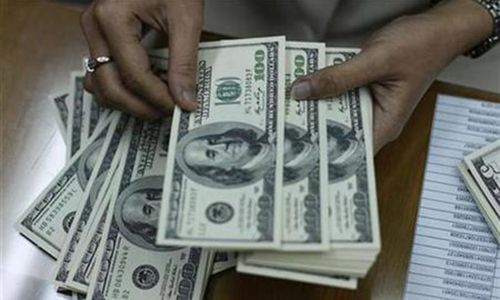KARACHI: The country’s current account turned to a surplus of $654 million in March — a big monthly figure and the first surplus in over two years — against a deficit of $36m in February.
This helped contract the ongoing fiscal year’s current account deficit (CAD) by a massive 74 per cent year-on-year to just $3.37bn in July-March.
This decline in the current account deficit was the outcome of $11.25bn fewer imports, a direct outcome of the import ban on luxury products and non-essential raw materials imposed last year, which hit manufacturing, prompting plant closures in the automotive and cellular sectors.
The third quarter, Jan-March, was the only one in FY23 which saw a net surplus of $388m. The first quarter (July-Sept) showed a deficit of $2.45bn while the second quarter (Oct-Dec) saw a deficit of $1.31bn, showing a downward trend.
Massive $654m surplus in March reduces nine-month CAD to $3.4bn, a quarter of the figure from a year ago
The government is hoping that CAD for the whole FY23 would be around $6bn.
However, this is still quite a big amount for a country such as Pakistan, which is plagued by low foreign exchange reserves.
Details provided by the State Bank of Pakistan show that in July-March, CAD declined to $3.37bn compared to a deficit of $13.014bn in the same period last fiscal year.
The massive decline in imports badly affected the economy as large-scale manufacturing declined by 11.4pc, exports nosedived and the overall economy could hardly see half a per cent worth of growth in FY23.
The International Monetary Fund, World Bank and Asian Development Bank had all predicted a growth rate in the range of 0.4 to 0.6pc.
Exports of goods in the July-March period declined to $21.09bn compared to $23.71bn last year. Exports of services increased to $5.53bn against $5.28bn last year, a rise of $250m.
However, the imports of goods declined by $11.25bn to $41.50bn compared to $52.75bn in the same period last year. Imports of services also declined by 39.7pc to $5.76bn compared to $9.54bn in the same period last year.
Despite this massive decline in the imports of goods and services, the trade deficit still stands at $20.6bn. For comparison, the CAD for all of FY22 was $17.4bn.
Despite this seemingly large reduction $9.64bn or 74pc, the government is still finding it difficult to cope with the remaining deficit.
It is currently making its best efforts to convince the IMF to release the stuck-up tranche of $1.1bn, which may also unlock inflows from other sources, but with no luck thus far.
Published in Dawn, April 20th, 2023














































Dear visitor, the comments section is undergoing an overhaul and will return soon.